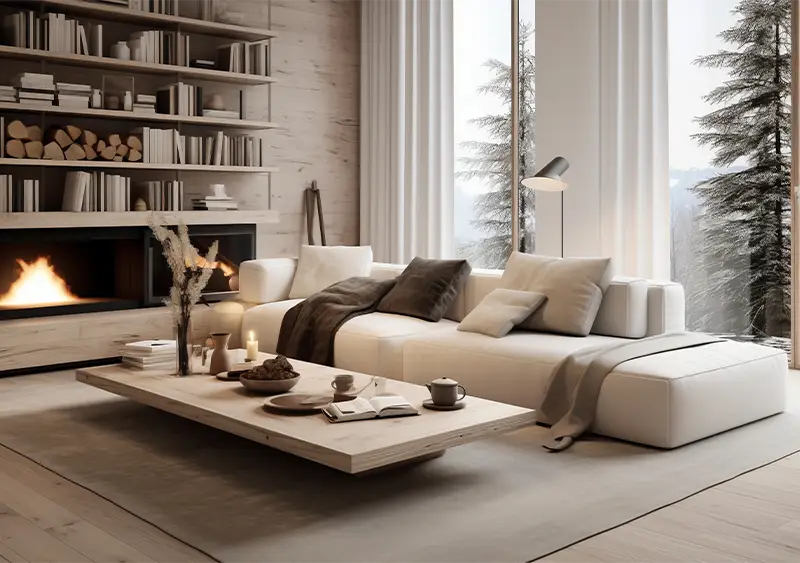7 Powerful Tips to Create Storytelling Lifestyle CG Images
Master Lifestyle CGI: 7 Tips for Visual Storytelling That Sells

6 MIN READ
April 24, 2025

Written By
Harish Selvaraj
Introduction
A good CGI image can showcase your product. A great one can make people feel something.
That’s the difference between a render that looks realistic and one that tells a story. Lifestyle CG images have become more than visual placeholders they’re marketing tools that sell context, emotion, and aspiration. When done right, they show your product in a world your customer wants to be part of.
But realism alone isn't enough. If the image lacks narrative, it gets scrolled past. If it lacks mood, it doesn’t convert. So how do you make your CG visuals not just accurate, but unforgettable?
In this blog, we’ll break down 7 proven tips to help you design lifestyle images that don’t just look good they speak, engage, and sell. Let’s dive in.
Why Storytelling Matters in Lifestyle CG Images
In a sea of perfectly lit product images, what makes one stand out?
It’s the story.
Storytelling in lifestyle CGI isn’t about adding drama or inventing fiction. It’s about creating context. When your product is placed in a setting that feels real and relatable, customers don’t just see it, they imagine it in their own lives.
That armchair isn’t just rendered in a room. It’s where someone unwinds after work. That dining table? It’s set for a family gathering. These subtle cues evoke emotion and create connection, which ultimately influences buying behavior.
A strong CG image tells your customer, “This is for you.” And that message is more powerful than any sales pitch.
Story-driven visuals are what turn browsers into buyers. Because people don’t just shop with logic, they shop with feeling.
7 Powerful Tips to Create Storytelling Lifestyle CG Images
Creating a beautiful CG image is one thing. Creating one that tells a story that lingers in someone’s mind is something else entirely. If your goal is to stop the scroll and spark emotion, these seven tips will help you craft visuals that do more than just look good.—because today, especially in digital commerce, compelling visuals are key to engagement, and understanding why 3D models are essential for online shopping helps shape visuals that truly connect.
1. Start with a Clear Narrative
Before you place a single object in your 3D scene, ask yourself one question: What is this image trying to say?
A romantic dinner? A quiet Sunday morning? A sleek, productive workspace? When you define the story early, every element in your scene starts working toward the same message. The lighting, layout, colors, and props all become storytellers.
Don’t start with a chair. Start with a moment someone wants to step into.
2. Design for the End User
Every brand has an audience. Every audience has a lifestyle. Your CG image should reflect both.
Think about who’s living in the scene you’re building. Are they a young couple in a city apartment? A family decorating their first home? A high-end buyer who appreciates minimalism?
Add cues they’ll recognize, textured throws, a half-read book, a laptop with open tabs. These are the details that say, this is made for you.
3. Master Composition and Camera Angles
Good visuals guide the eye. Great visuals guide emotion.
Use classic photography principles like the rule of thirds, leading lines, and depth of field to create intentional focus. Keep the camera angle at human eye level unless there's a creative reason not to.
An overhead shot might show the space, but a seated perspective invites the viewer in. Think more like a photographer, less like a technician.
4. Light Like a Cinematographer
Lighting isn’t just a technical setting, it’s the emotional engine of your image.
Want warmth and comfort? Use soft, natural daylight with long shadows. Need sophistication? Go for a moodier setup with contrast and crisp highlights. Light direction, color temperature, and shadow intensity all work together to shape the scene’s personality.
You’re not just lighting a room. You’re lighting a feeling.
5. Choose Props with Purpose
Every object in your scene should earn its place. Props shouldn’t just fill space they should build the narrative.
For a creative studio, a mug filled with brushes or a rough sketchpad tells a better story than a generic plant. For a cozy reading corner, a folded blanket and worn novel say more than a perfectly arranged flower vase.
Avoid over-staging. Authenticity beats symmetry.
6. Keep It Natural and Lived-In
Perfection doesn’t connect. People relate to real.
Include subtle imperfections, a slightly unmade bed, shoes near the door, a chair that’s slightly turned. These tiny details add life. They help the viewer picture themselves using the space, not just admiring it.
A clean scene is polished. A lived-in scene is powerful.
7. Align with Brand Aesthetic
Your storytelling CG image doesn’t just sell a product. It represents your brand.
Use consistent color palettes, styling cues, and tone that match your packaging, website, and ads. Whether your brand is earthy and warm or sleek and futuristic, your lifestyle renders should reflect that DNA.
The most effective CG scenes don’t just tell one story, they tell your story.
How ZealousXR Helps You Create High-Impact Storytelling CG Images
At ZealousXR, we believe a product image should do more than just showcase it should connect. That’s why we approach lifestyle CG rendering with one core focus: telling stories that move people.
We don’t just model a sofa or light a scene. We build environments that feel real, characters you don’t see but sense, and moments that make a customer pause and imagine life with your product in it.
Here’s what we bring to every project:
-
Narrative-driven planning: We begin by understanding your brand voice, your customer, and the emotion you want to evoke
-
Styling with purpose: From furniture layout to prop placement, every detail is chosen to support your message
-
Lighting that feels cinematic: We tailor light and shadow to create depth, realism, and atmosphere
-
Consistency across scenes: Your visual identity is maintained whether it’s one image or a full series
-
Fast, collaborative execution: You bring the vision, we bring the tools and expertise to bring it to life—on time, and on brand
Whether you're building a product catalog, launching a campaign, or creating an immersive brand experience, ZealousXR helps you go beyond beautiful renders—and into storytelling that sells.
Conclusion
If Your CG Image Doesn’t Tell a Story, It’s Just Background Noise!
Today’s buyers don’t just want to see a product. They want to feel something. They want to see a life they relate to, a moment they aspire to, a space that makes them pause. That’s the power of storytelling in lifestyle CG images.
It’s not about perfection. It’s about presence. A well-told visual story doesn’t need words—it captures attention, builds trust, and drives action.
At ZealousXR, we help you craft CG images that aren’t just pretty, they’re persuasive.
Partner with ZealousXR and create CG images that sell through story, not just style.
About the writer :
Harish Selvaraj heads Zealous Services' 3D animation and modeling projects, bringing over 17 years of experience in ... delivering top-tier 3D solutions. He collaborates directly with clients to ensure their ideas are transformed into powerful 3D results that meet both creative and business goals. Harish is deeply involved in driving sales and managing teams, making sure that each project delivers on quality while helping businesses grow through impactful 3D designs.
Read MoreFrequently Asked Questions (FAQ)
What makes a CG image truly “storytelling”?
A storytelling CG image captures more than the product—it sets a mood, reflects a lifestyle, and evokes emotion. It tells a subtle story through props, lighting, and layout that makes the viewer feel something. This connection is what turns casual viewers into engaged customers.
How do I know what kind of story to tell in my render?
Start with your target audience. Think about the life they want and the environment they live in. The more your scene reflects their world (or aspiration), the more powerful the image becomes. Always tie the story back to your product’s purpose and brand tone.
Can storytelling CG images really increase engagement or conversions?
Yes. Visual storytelling helps shoppers visualize how the product fits into their life. This emotional context builds trust and makes your product more memorable. Studies show lifestyle imagery often leads to longer time-on-page and higher purchase intent.
What’s the difference between product shots and lifestyle CG images?
Product shots focus on isolated visuals—clean, detailed, technical. Lifestyle images place the product in a natural setting, often styled with human context. Both serve a purpose, but lifestyle CG creates emotional pull that product-only shots rarely achieve.
How can ZealousXR help me if I don’t have an in-house design team?
ZealousXR works as your creative partner, handling the entire process—from concept to post-production. We help define your visual story, model the scene, and deliver high-impact CG renders. No internal design team? No problem. We’ve got the tools, talent, and speed to match your brand